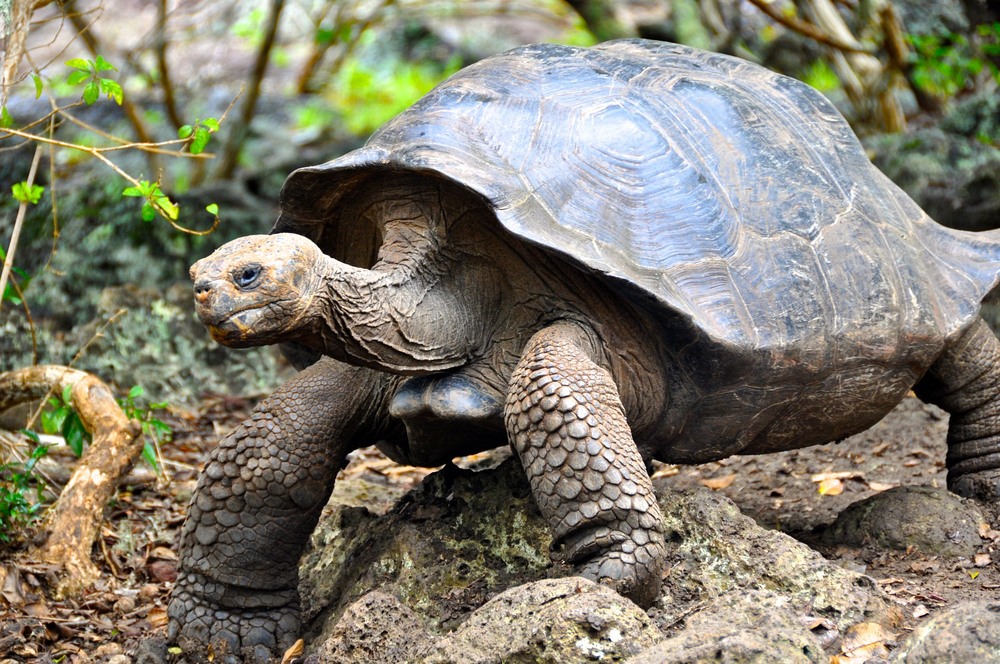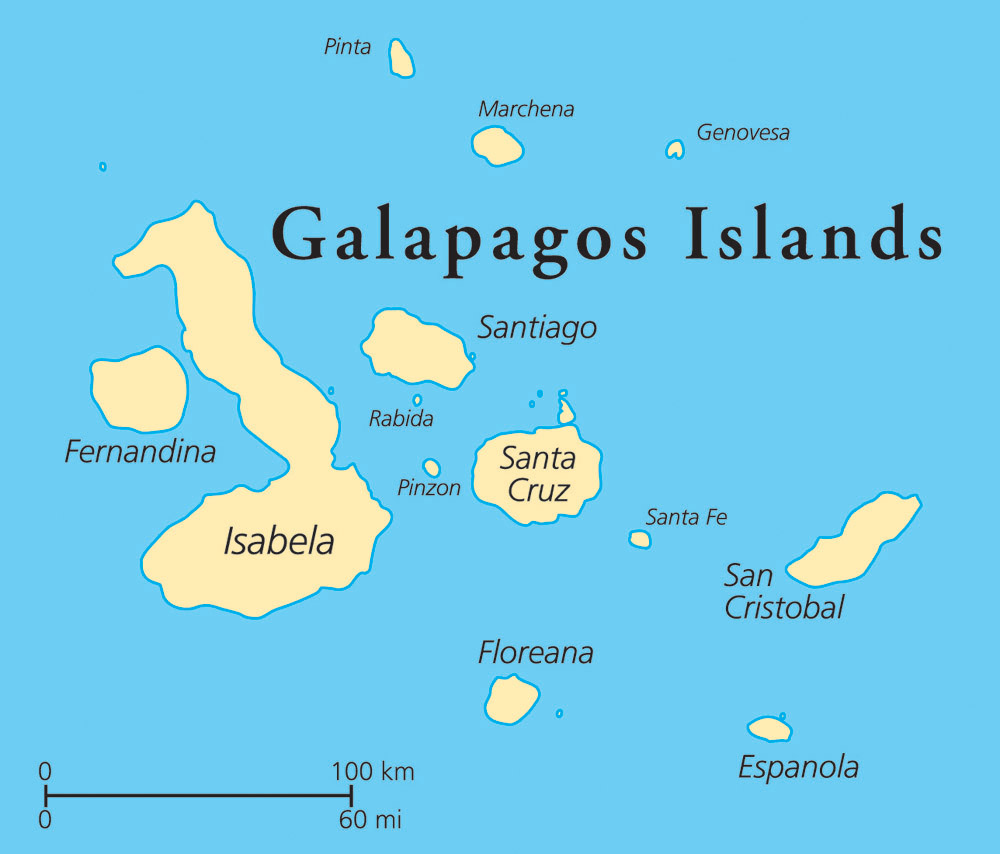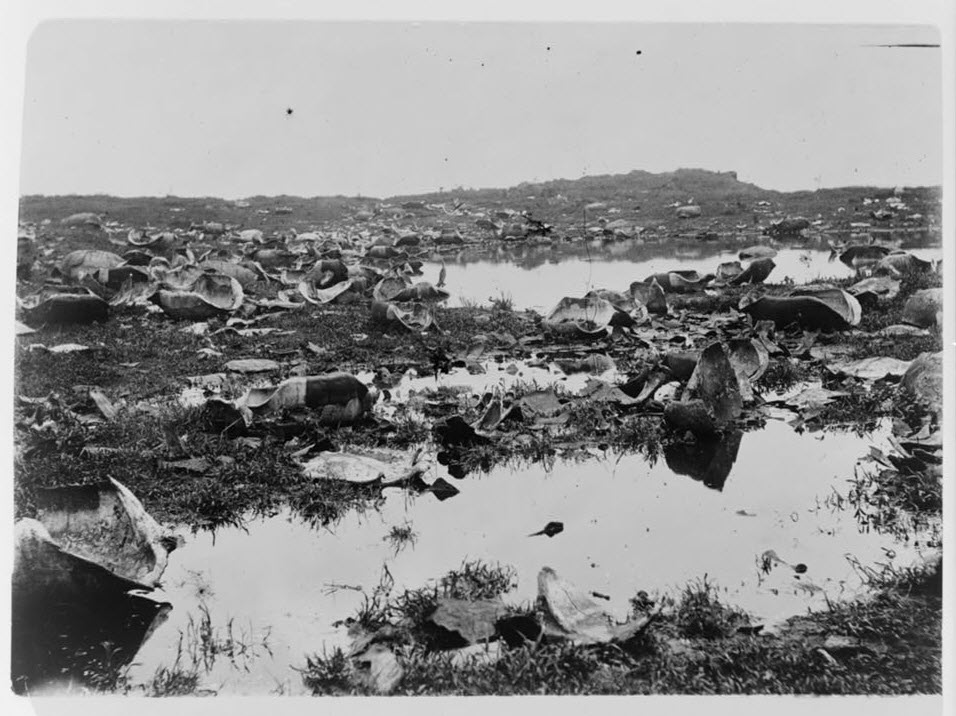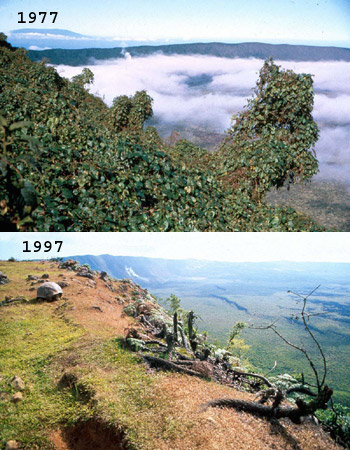The Galapagos Islands, off the west coast of Ecuador, are a treasure trove of unique ecological specimens. The islands’ extreme isolation and favorable climate owning to its location on the equator have allowed a number of species to evolve peculiar characteristics suitable to their environment. The iguana, for instance, is a land-dwelling reptile. But those on the islands of Galapagos have learned how to swim and can now forage for food in the sea. Equally perplexing are the flightless cormorants, that have lost the ability to fly and are thus confined to the islands. Stranger still are the Galapagos penguins, that unlike their southern cousins, have learned to love the endless summers on this tropical paradise. But the star attraction are the giant tortoises, with their hulking grey shells and enormous lifespan. They are one of the best known inhabitants of the Galapagos.

The Galapagos giant tortoise. Photo credit: Niccie King/Flickr
In the late 20th century, the Galapagos giant tortoise was on the brink of extinction. From over 250,000 individuals in the 16th century, their numbers fell to only 3,000 in the 1970s, primarily due to hunting by humans. The tortoises are relatively immobile and defenseless, and therefore easy to collect and stored live on board ships, where they could survive for a year without food, providing fresh meat to the sailors. Those who ate the meat of the giant tortoise described it as “the most delicious food they had ever tasted”. One US Navy Captain declared that “after once tasting the Galapagos tortoises, every other animal food fell off greatly in our estimation.” Even Charles Darwin thought the meat was “very good” and that “young tortoises make excellent soup.”
Once people started establishing colonies on the Galapagos islands, in the early 19th century, the population of the giant tortoise fell dramatically. Aside from indiscriminate hunting, these outsiders introduced invasive species into the island, such as goats, pigs, donkeys, cats etc., that crippled the fragile ecosystem. The biggest invaders of them all was goats. These deceptively harmless herbivores devoured all available vegetation, including some of the world’s rarest plants, and competed with native species for the island’s scare resources. As goats stripped the islands bare, the tortoises began to disappear.

Map of Galapagos Islands by Peter Hermes Furian/Shutterstock.com
In 1995, a decision was taken to eradicate goats from the Galapagos in order the save the island’s native flora and fauna. It was understood that an aggressive approach was needed. Two years later, an outline for Project Isabela was drawn out, according to which goat and donkeys were to be eradicated from Isabela island, pigs, goats, and donkeys from Santiago Island, and goats from Pinta Island.
Work began in 1999 with a team of skilled sharpshooters scouring the three islands on foot, and then in helicopters, shooting goats from the air. It was one of the most cutting-edge eradication program of the time. Within a few years, 90 percent of the goats were eradicated with relative ease. But as goats became rarer and rarer, they became harder to detect. The remaining goats learned to be wary of the hunters, and started hiding in bushes, caves, or lava tunnels. The remaining ten percent became increasingly difficult to remove. To achieve total eradication, the hunters employed something called the “Judas goat”.
A handful of goats (a few hundreds actually) were gathered, sterilized, injected with hormones to give them a long-term estrus, fitted with radio tracking collars and released on the islands. Because goats are social animals, they instinctively sought out other goats and by following the Judas goats, hunters were able to track down the remaining goats on the islands. Once a herd was found, the hunters would shoot all the goats except the Judas goat, so that it could deployed again to find more hidden goats.

Remains of tortoises killed by hunters on Galapagos Islands, circa 1903. Photo credit: Library of Congress
After the goats were killed, the corpses were left to rot so that the valuable nutrients the goats consumed on the island could return back to the soil. Taking their meat away would have removed these nutrients from the island forever. “It could be very destructive, like removing 10,000 trees from a rainforest,” said Dr. Karl Campbell, the field manager who ran Project Isabela’s operations. “Better to let the bodies decompose into the soil.” A handful of goats, however, were consumed by the eradication team.
Over 200 Judas goats were deployed on Santiago island, and some 770 on the larger Isabela island over the course of two years. By 2006, they were the only goats that remained on the target islands. The herd was further culled so that only twenty or thirty remained on Santiago island and 266 on Isabela island. These were allowed to live on the islands for monitoring purposes.
After the Galapagos was rid of the goats, the vegetation underwent an amazing recovery. Small trees began regenerating from the stumps left by the goats. Highland shrub species, forest tree seedlings, Opuntia cactus, and other endemic species increased in number. The population of Galapagos rails improved, and thanks to other conservation efforts like captive breeding, the population of the giant tortoise also bounced back.


View of Alcedo volcano on Isabela Island (left) and Santiago Highlands (right) before and after the removal of goats.
Project Isabela was the world's largest island restoration effort to date. In seven years, more than 140,000 goats were eradicated from half a million hectares of land at a cost of US$10.5 million. The last few hundreds were the hardest and the most expensive to remove.
The success of Project Isabela led conservationists to launch goat eradication program on three more islands. Together with aerial hunting, ground hunting with dogs, and Judas goats ten thousand more goats were eliminated between 2006 and 2009.



Comments
Post a Comment